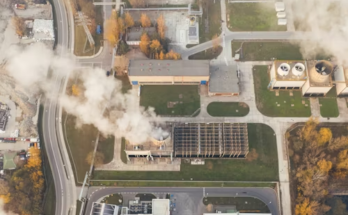Living sustainably is an effective way to reduce your environmental footprint. Start by ditching single-use plastic bags and cups; also avoid eating red meat, as this uses up valuable resources while emitting methane gas into the atmosphere.

Perfectionists typically avoid making decisions that require commitment because doing so would involve testing their myth, which would reveal an unpleasant truth about vulnerability.
Go paperless
As technology makes digital tools more affordable and accessible to businesses of all sizes, more organizations are adopting the practice of going paperless. Simply put, this involves moving all documents, files, and records into digital format for easier accessibility, organization, and processing.
While making this change may seem straightforward and uninspiring, it actually brings many advantages, both for businesses and the environment. Implementing a paperless system expedites document retrieval, thereby saving time and resources, and enhances data security by reducing the likelihood of misplacement or theft compared to physical documents.
Making the switch to digital reduces environmental waste, as paper production necessitates deforestation, which contributes to greenhouse gas emissions and global warming. Furthermore, paper can only hold so much information, whereas digital files can grow with us over time.
Schools implementing paperless systems can benefit greatly by cutting back on administration costs and automating processes such as admissions, enrollment, financial aid payments, and tuition payments. Going paperless also reduces their dependence on paper for record-keeping purposes and improves communication with stakeholders such as students, parents, and others.
Implementing a paperless system may necessitate changing the habits of employees and advisors who have become accustomed to paper forms. Therefore, it is crucial to educate everyone involved about the reasons behind this change to facilitate the transition and prevent potential issues. TADS School Management Software makes the switch easy with electronic signature technology for managing contract and agreement workflows and signature verification workflows.
Reduce your food waste.
Food waste occupies valuable landfill space, where its decomposition creates methane gas, which has 25 times greater warming potential than carbon dioxide. Food waste contributes significantly to global warming and is costly both financially and ecologically, but there are effective steps we can take to reduce it.
An effective way to reduce food waste is to create a meal plan and shopping list before heading to the store, as this will allow you to purchase only what is necessary and avoid making impulse buys that may go bad before being eaten. Furthermore, make sure to utilize leftovers or store any uneaten items for later use.
Learn the different best-by or expiration dates on food labels, and use this knowledge to make informed decisions regarding whether to keep foods past their prime. Remember, best-by dates are merely indicators of safety or quality, and you should not interpret them as such.
If you find yourself throwing away food, be sure to compost or donate it to a food bank or shelter instead of simply throwing it out. This can also benefit farmers by reducing production land requirements, improving nutrition, and decreasing food insecurity.
Shop locally to reduce food waste. Since food travels long distances to reach the store, shopping at local markets, farm stands, and community-supported agriculture (CSA) programs is an effective way of cutting emissions related to transporting your groceries while supporting your local economy and sustainable farming practices.
Buy local
Buying local is one of the key elements of living sustainably. Purchasing locally grown food not only ensures fair production conditions, but it also supports local economies and keeps money within communities.
Local produce often tastes fresher and is of higher quality than that coming from far away. This is because it has not spent days sitting on trucks and planes, where it might spoil. Local farmers also take into account which nutrients their crops need in order to remain productive, using fewer chemicals overall.
Shopping for locally grown food can also help to build relationships between you and those who produce it, especially at farmers’ markets where producers can interact directly. When you shop this way, you gain valuable knowledge about sustainability issues related to various food products, including the farming practices used during production.
Buy locally to help support healthy communities by reducing air pollution and congestion. Furthermore, buying locally can increase biodiversity among plants and animals, resulting in healthy ecosystems. However, it would be difficult to convince an opposing view that locavorism is morally superior to offsetting. For example, it’s difficult to understand why Alice’s decision to purchase her onion from Bob the farmer would foster stronger community ties than Alice’s decision to pay Carol, a local resident, at a national supermarket. Furthermore, buying from small-scale farmers may outweigh donating money directly to poor food industry workers located far from Alice.
Recycle
Recycling is an invaluable means of contributing to sustainability; it conserves natural resources and energy use while creating local and global employment opportunities.
Many of us understand the value of recycling to help preserve the environment, yet few understand exactly what happens when items go into our recycling bins. It’s essential to remember that processing recycled materials takes an enormous amount of effort and energy; therefore, the most sustainable option would be to avoid creating waste altogether.
Some may view recycling as overrated, especially if its materials are shipped overseas for processing. This can create environmental concerns like dumping, landfill gas emissions, and pollution in nearby areas, further compounded by less developed countries’ lack of environmental regulations.
Other criticisms of recycling point out the energy costs involved with processing recycled items and claim this adds significantly to climate change, yet this ignores that recycling remains far better for the environment than mining or incineration of raw materials for raw material use.
Idealistically, humanity would exist in an idealized society that recycles materials indefinitely. Unfortunately, we’re still far away from this goal, but you can help get closer by choosing to purchase recycled and sustainable products, buying reusable cups and lunchboxes instead of disposable tissues, carrying around a handkerchief when cold-stricken instead of disposable tissues, and even switching your computer to power-saving mode when not working on it.
Reuse
Instead of purchasing something new, look for ways to reuse or repurpose what you already own. From donating clothing and books to charity shops to using mason jars as storage or wrapping presents with old paper, there are numerous opportunities for reducing waste while saving both money and energy by donating.
Reusing products made from recycled materials helps conserve natural resources while protecting our environment for future generations.
Reusing can also be more resource-efficient than recycling, which involves collecting and processing used material into new forms. This process utilizes water, energy, and other resources and may contribute to pollution.
Reusing materials can reduce production and disposal costs for both the organization producing the product and the consumers purchasing it, as it allows for the reuse of previously owned equipment and materials.
Reusing is often cheaper than purchasing new, and it can reduce our reliance on limited natural resources such as timber and oil. Furthermore, it helps preserve forests and rivers by eliminating waste generated through raw material harvesting for landfill creation purposes.
By switching from buying new to using what we already own, we can prevent harming the environment and the communities that rely on it for their livelihoods. For instance, our demand for paper can force forests to be clear-cut for raw material production, which in turn displaces people from their homes while polluting waterways and leading to land degradation.




